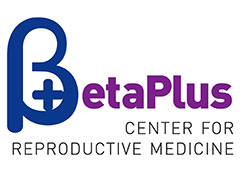Stimulation of ovulation (synonyms are superovulation or ovulation induction) for IVF comprises of using some medication which will lead to ovulation of one or several follicles, depending on the procedure that is planned in that cycle. In natural cycle one egg is usually produced during the ovulation, but certain number of women ovulates rarely (anovulatory cycles) and should take medications to ovulate.
In patients with idiopathic infertility, endometriosis, tubal factor or male factor, in ovarian stimulation protocols GnRH agonists or antagonists are used (triptorelin, busereline, cetrorelix) preventing premature LH elevation and ovulation prior to a full follicular maturity; gonadotropins stimulating development of numerous follicles (follitropin, menotropins); hCG supporting a final maturation of eggs in follicles, followed by one of the assisted fertilization procedures: IUI, IVF/ET, ICSI/ET, etc. Multi-follicular ovulation will result in a higher number of embryos and thus to higher chances of conception per cycle.
There are long, short and ultra-short protocols using GnRH agonists. In long protocols agonist are usually started on 21st day of the previous cycle, and are taken until the final HCG injection. Gonadotropins are usually started on 2nd day of the cycle, and first follicle monitoring ultrasound is scheduled sometime between day 7 or 8 of the cycle. In short protocol, agonist are started on day 1 of the cycle, and in ultra-short even later.
Besides follicle monitoring, your doctor may ask for blood draws for levels of estradiol and progesterone. The number of follicle monitoring ultrasounds will depend on reaction to medications. If there is no reaction to ovulation induction drugs the cycle will be cancelled. Injections of medications should be given at the same time each day, until the leading follicle reaches the size of 17-20 mm. Then the hCG injection is administered.
The protocol with antagonists has been introduced after the agonist protocols, and its advantage is a significantly shorter procedure and lower usage of gonadotropins. This procedure starts with gonadotropin injections between days 2 and 4 of the cycle, while antagonist is introduced either on a fixed day of the cycle or depending on the size of follicles.The aim of the induction is to get as many follicles as possible with a diameter of 17-20 mm, upon which hCG injection is induced, and follicle aspiration is planned in 34-36 hours, immediately before expected ovulation. The first follicle monitoring ultrasound is scheduled usually on day 6 of the cycle (earlier than the agonist protocol), especially when a flexible antagonist protocol is planned to be used. Antagonist protocol is usually used in women with normal ovarian reserve, and especially in women with high ovarian reserve because in case of hyperstimulation agonist trigger can be used.
Short protocols with agonists start at the first day of the cycle, and are mostly used with non-responders.
All protocols may be preceded by contraceptive treatment over a period of 1-2 months in order to reduce chances of developing ovarian cysts prior to the procedure and for the timing purposes.
GnRH agonists and antagonists will prevent early LH elevation and premature ovulation which would otherwise result in cycle failure.




